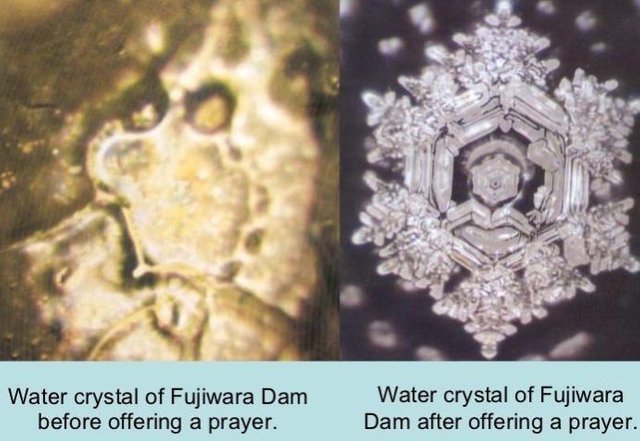If Human Thought Can Do This To Water, Just Imagine What It Can Do To Us

This is exactly what’s happening right now, and it’s making its presence felt in all levels of academia. But we still have a lot way to go. Fortunately, a group of internationally recognized scientists have come together to stress the importance of what is still commonly overlooked in the mainstream scientific community: the fact that matter (protons, electrons, photons, anything that has a mass) is not the only reality. We wish to understand the nature of our reality, but if we only examine physical systems and ignore all the rest — things like consciousness, and the way it interacts with matter — we’ll never be able to.
A few years ago, these scientists held an International Summit on Post-Materialist Science, and created a manifesto to explain its significance. The scientists involved were Mario Beauregard, PhD (University of Arizona), Gary E. Schwartz, PhD (University of Arizona), and Lisa Miller, PhD (Columbia University), in collaboration with Larry Dossey, MD, Alexander Moreira-Almeida, MD, PhD, Marilyn Schlitz, PhD, Rupert Sheldrake, PhD, and Charles Tart, PhD.
There are hundreds of published peer-reviewed publications showing statistically significant results for this type of science, yet unfortunately, it is still shunned by mainstream academia, even though so many mainstream academic scientists support it. What is going on here?
The idea that the mind affects physical material reality is not trivial, and it’s been demonstrated repeatedly with statistically significant results through fascinating research undertaken by government programs, places like the Institute of Noetic Sciences (founded by Dr. Edgar Mitchell), and, in more recent developments, the group of internationally recognized scientists mentioned above.
Why would these scientists — people working at the highest level of government — be studying this type of science if there was absolutely no validity behind it?
The implications of this type of science are far reaching, and in the opinion of many, far greater than those of material science. Don’t be fooled; material science has been integral to the advancement of humanity, but non-material science is truly our next step. Human thoughts, feelings, emotions, perceptions, consciousness, and more are all intertwined with what we perceive to be our physical material reality,
The science of consciousness is the backbone of quantum mechanics (QM), the discipline that challenges the current, assumed material foundations of what we call reality.
“I regard consciousness as fundamental. I regard matter as derivative from consciousness. We cannot get behind consciousness. Everything that we talk about, everything that we regard as existing, postulates consciousness.”
– Max Planck, theoretical physicist who originated Quantum Theory, which won him the Nobel Prize in Physics in 1918
Human Thought and Water
Experiments over the past four decades have investigated whether human intention alone can affect the properties of water. This question has been of interest to alternative medicine research, because the human body is made up of approximately 70% water. Interest in this topic has been rekindled recently by multiple researchers suggesting that intentionally influenced water can be detected by examining ice crystals formed from samples of that water.
Scientists have hypothesized and shown that water influenced by intention can indeed influence the physical formation of the ice crystals that water produces. Consistent results commonly point to the idea that positive intentions tend to produce symmetric, well-formed, aesthetically pleasing crystals, and negative intentions tend to produce asymmetric, poorly formed, and unattractive crystals.
Dean Radin, the Chief Scientist at the Institute of Noetic Sciences, along with Masaru Emoto, Takashige Kizu, and Nancy Lund, designed an experiment that tested this hypothesis.
As the study’s description reads:
“Over three days, 1,900 people in Austria and Germany focused their intentions towards water samples located inside an electromagnetically shielded room in California. Water samples located near the target water, but unknown to the people providing intentions, acted as ‘‘proximal’’ controls. Other samples located outside the shielded room acted as distant controls. Ice drops formed from samples of water in the different treatment conditions were photographed by a technician, each image was assessed for aesthetic beauty by over 2,500 independent judges, and the resulting data were analyzed, all by individuals blind with respect to the underlying treatment conditions. Results suggested that crystal images in the intentionally treated condition were rated as aesthetically more beautiful than proximal control crystals (p < 0.03, one-tailed). This outcome replicates the results of an earlier pilot test.”
This work is licensed under a Creative Commons Attribution-Share Alike 3.0 License and has been shared with permission and attribution to TruthTheory